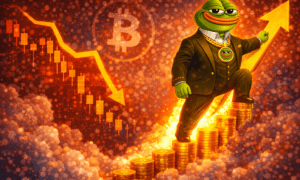US markets will open after Easter, while Europe and Asia are closed. Investors are focusing on inflation data and economic indicators.
TakeAway Points:
- On Easter Monday, major European and Asian markets closed; U.S. markets, including the NYSE and Nasdaq, reopened.
- The labour market will be significantly illuminated by upcoming economic data (job openings, the ADP Employment Report, and the Labour Department’s Employment Report).
- With Bitcoin trading above the $70,000 threshold, investors are focusing on how the PCE inflation statistics may affect the Fed’s rate choices.
Market Resumption After Easter
Investors in the U.S. and other parts of the world are gearing up to resume trading activities after the Easter weekend. While the New York Stock Exchange and the Nasdaq will be operational, several major markets across Europe and Asia, including London, Frankfurt, and Hong Kong, will remain closed in observance of Easter Monday.
This mixed market opening comes after a period of closure during Good Friday, a day when U.S. stock exchanges were closed, and the Treasury market closed an hour early as per the Securities Industry and Financial Markets Association‘s suggestion.
Despite the enthusiasm to return to trading, historical data suggests that Easter Monday has not always been favorable for the markets. However, recent trends have shown a positive shift, with the S&P 500 experiencing gains on Easter Monday in seven out of the last ten years. This change in pattern reflects a potentially evolving market sentiment during this period.
Financial Measures and Profitability Analysis
The week following Easter is set to provide investors with several key economic indicators. The Job Openings and Labor Turnover Survey for February is scheduled for release on Tuesday, followed by the ADP National Employment Report for March on Wednesday, and the U.S. Labor Department’s employment report for March on Friday. These reports are anticipated to shed light on the current state of the labor market, which has been a focal point for investors monitoring the economy’s health.
In terms of earnings, the week is relatively quiet, but a report from Levi Strauss on Wednesday is expected to offer insights into the retail sector’s performance. This could serve as an indicator of consumer spending trends and the broader economic landscape.
Market Response to Concerns About Inflation
A crucial piece of economic data awaited by investors is the February personal-consumption expenditures (PCE) index, set for release on Good Friday. Although markets were closed during its release, the data is significant as it provides insights into inflationary pressures. Economists predict an increase in the headline PCE, with expectations of a rise to 2.5% in February from 2.4% the previous month. The core PCE, the Federal Reserve’s preferred inflation measure, is also expected to show a slight increase.
The anticipation surrounding the PCE report is high, as recent consumer-price index figures have injected uncertainty into the market, affecting expectations regarding the Federal Reserve’s interest rate decisions. Investors are keenly awaiting the opportunity to react to the PCE data, which could influence the Fed’s monetary policy direction, including the timing and extent of anticipated rate cuts.
Emphasis on Digital Assets and Bitcoin
Amid the closure of traditional markets for Easter, attention has turned to cryptocurrencies, with Bitcoin holding above the $70,000 mark after a recent correction. The upcoming release of the core PCE price index could further influence trading in digital assets, highlighting their sensitivity to inflation and interest rate outlooks. The launch of spot Bitcoin ETFs in the U.S. has also played a role in Bitcoin’s price movements, attracting institutional interest and contributing to the cryptocurrency’s resilience.
Analysts have noted dynamics within the crypto market that could indicate a nearing top for Bitcoin’s bull run, including the transfer of wealth from long-term holders to new investors. This shift, coupled with the potential exhaustion of new demand, suggests that the market may be approaching a point of saturation.



































